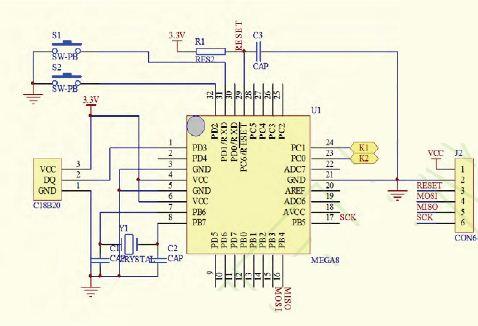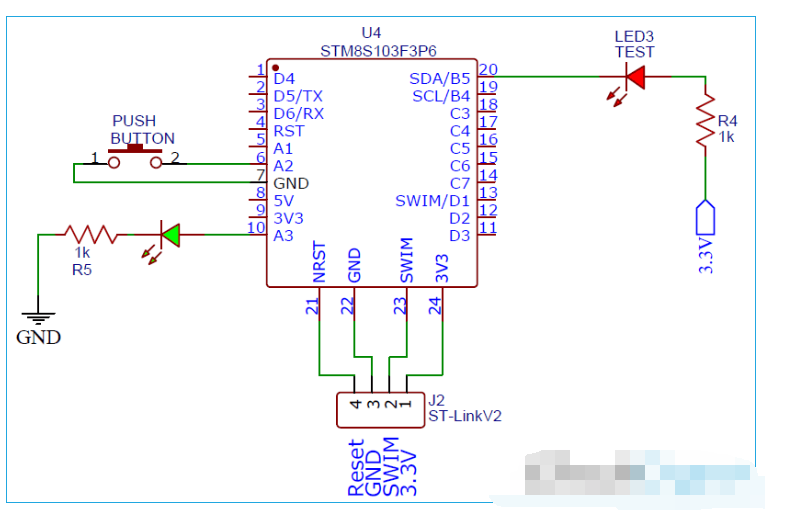本文档提供了在 Android 10 设备上通过应用程序(App)控制通用输入输出(GPIO)的详细指南。这涵盖了从创建 gpio驱动到App 配置 以及 SELinux 策略以允许特定访问的所有必要步骤。
1.1驱动实现
添加创建gpio控制驱动bspkernelkernel4.14driversgpiogpio_led.c,并添加好对应的Makfile编译
#include #include #include #include #include #include #include #include #include #include #include #include #include #include #include #include #include #include #include #include #include #include #include #include #include #include #include #include #include #include #include #include #include #include #include #include #include #include #define GPIO_HIGH _IO('L', 0) #define GPIO_LOW _IO('L', 1) #define LED_ON 1 #define LED_OFF 0 #define SIMPIE_LED_MAX 4 //============================== Upper interface value ==============================// // 驱动模块名称定义 #define MODULE_NAME "gpio_led" // 驱动模块的名字 #define MISC_NAME "gpio_led_device" // 用于注册为“misc”设备的名字 // 模块函数接口定义,供上层应用调用的接口。通过MM_DEV_MAGIC区分不同系统接口,通过_IO()加上自己的编号作为接口number。 #define MM_DEV_MAGIC 'N' // LED 控制命令 #define RFID_IO1 _IO(MM_DEV_MAGIC, 93) #define RFID_IO2 _IO(MM_DEV_MAGIC, 130) #define RFID_IO3 _IO(MM_DEV_MAGIC, 121) #define RFID_LED _IO(MM_DEV_MAGIC, 138) static int major; static struct class *cls; // GPIO 描述数组 struct gpio_desc *led_gpio[SIMPIE_LED_MAX]; // cat命令将调用该函数 static ssize_t gpio_value_show(struct device *dev, struct device_attribute *attr, char *buf) { return sprintf(buf, "%d ", gpiod_get_value(led_gpio[0])); } // echo命令将调用该函数 static ssize_t gpio_value_store(struct device *dev, struct device_attribute *attr, const char *buf, size_t len) { pr_err("[vanxoak]%c ", buf[0]); if ('0' == buf[0]) { gpiod_direction_output(led_gpio[0], 0); pr_err("[vanxoak]: _%s_ :gpio off ", __func__); } else if ('1' == buf[0]) { gpiod_direction_output(led_gpio[0], 1); pr_err("[vanxoak]: _%s_ :gpio on ", __func__); } else pr_err("I only support 0 or 1 to ctrl gpio on or off "); pr_err("[vanxoak]gpio_value_store "); return len; } // 定义一个名为gpio_led的设备属性 static DEVICE_ATTR(gpio_led, 0664, gpio_value_show, gpio_value_store); // 提供给上层控制的接口 long gpio_led_ioctl(struct file *file, unsigned int cmd, unsigned long arg) { switch (cmd) { case RFID_LED: gpiod_direction_output(led_gpio[0], arg); break; case RFID_IO1: gpiod_direction_output(led_gpio[1], arg); break; case RFID_IO2: gpiod_direction_output(led_gpio[2], arg); break; case RFID_IO3: gpiod_direction_output(led_gpio[3], arg); break; default: pr_err("[vanxoak] %s default: break ", __func__); break; } return 0; } struct file_operations gpio_led_ops = { .owner = THIS_MODULE, .unlocked_ioctl = gpio_led_ioctl, }; // LED灯初始化 static int simpie_led_init(struct platform_device *pdev) { int ret = 0; int i; // 申请gpio设备 led_gpio[0] = devm_gpiod_get(&pdev->dev, "led0", GPIOD_OUT_LOW); led_gpio[1] = devm_gpiod_get(&pdev->dev, "led1", GPIOD_OUT_LOW); led_gpio[2] = devm_gpiod_get(&pdev->dev, "led2", GPIOD_OUT_LOW); led_gpio[3] = devm_gpiod_get(&pdev->dev, "led3", GPIOD_OUT_LOW); for (i = 0; i < SIMPIE_LED_MAX; i++) { if (IS_ERR(led_gpio[i])) { ret = PTR_ERR(led_gpio[i]); return ret; } // 输出初始电平 ret = gpiod_direction_output(led_gpio[i], LED_OFF); } device_create_file(&pdev->dev, &dev_attr_gpio_led); return ret; } // 驱动入口 static int gpio_led_probe(struct platform_device *pdev) { int ret = 0; pr_err("[vanxoak]gpio_led_probe start... "); // LED灯gpio初始化及输出配置 ret = simpie_led_init(pdev); pr_err("[vanxoak]gpio_led_probe end... "); return 0; } // 绑定设备 static struct of_device_id gpio_led_match_table[] = { {.compatible = "yz,gpio-led"}, {}}; static int gpio_led_remove(struct platform_device *pdev) { pr_err("[vanxoak]gpio_led_remove... "); return 0; } static struct platform_driver gpio_led_driver = { .driver = { .name = MODULE_NAME, .owner = THIS_MODULE, .of_match_table = gpio_led_match_table, }, .probe = gpio_led_probe, .remove = gpio_led_remove, }; // gpio初始化入口 static int gpio_led_init(void) { struct device *mydev; pr_err("[vanxoak]gpio_led_init start... "); platform_driver_register(&gpio_led_driver); major = register_chrdev(0, "gpiotest", &gpio_led_ops); // 创建gpio_led_class设备 cls = class_create(THIS_MODULE, "gpio_led_class"); // 在gpio_led_class设备目录下创建一个gpio_led_device属性文件 mydev = device_create(cls, 0, MKDEV(major, 0), NULL, MISC_NAME); if (sysfs_create_file(&(mydev->kobj), &dev_attr_gpio_led.attr)) { return -1; } return 0; } static void gpio_led_exit(void) { pr_err("[vanxoak]gpio_led_exit... "); platform_driver_unregister(&gpio_led_driver); device_destroy(cls, MKDEV(major, 0)); class_destroy(cls); unregister_chrdev(major, "gpiotest"); } module_init(gpio_led_init); module_exit(gpio_led_exit); MODULE_DESCRIPTION("Device_create Driver"); MODULE_LICENSE("GPL"); 设备树配置 gpio_led: yz,gpio-led { status = "disabled"; compatible = "yz,gpio-led"; led0-gpio = <&ap_gpio 138 GPIO_ACTIVE_HIGH>; led1-gpio = <&ap_gpio 93 GPIO_ACTIVE_HIGH>; led2-gpio = <&ap_gpio 130 GPIO_ACTIVE_HIGH>; led3-gpio = <&ap_gpio 121 GPIO_ACTIVE_HIGH>; };
配置好上面gpio驱动后重新编译更新kernel 可以在/dev目录下找到对应的设备文件
"/dev/gpio_led_device",通过读写设备文件就可以操作gpio了。
1.2创建 Native 库
1.2.1设置 JNI 方法
在 App 中定义 JNI 方法以实现与 GPIO 设备的交互。
public class NativeClass {
static {
try {
System.loadLibrary("jni_gpiocontrol");
Log.d("NativeClass", "Native library loaded successfully.");
} catch (UnsatisfiedLinkError e) {
Log.e("NativeClass", "Failed to load native library: " + e.getMessage());
// throw new RuntimeException("Failed to load native library", e);
}
}
// 声明本地方法
public native int controlGPIO(int cmd, long arg);
}
1.2.2实现 Native 方法
在app/src/main目录下创建一个cpp文件夹(如果你的项目是用Kotlin编写的,这个步骤仍然适用,因为JNI是用C/C++实现的)。将你的libjni_gpiocontrol.cpp文件放到这个cpp目录中。
注意事项:确保本地方法签名正确,Java方法签名和本地(C/C++)方法实现之间必须完全匹配。
#include
#include
#include
#include
#include
#include
#include
#include
#define MM_DEV_MAGIC 'N'
#define RFID_LED _IO(MM_DEV_MAGIC, 138)
#define RFID_IO1 _IO(MM_DEV_MAGIC, 93)
#define RFID_IO2 _IO(MM_DEV_MAGIC, 130)
#define RFID_IO3 _IO(MM_DEV_MAGIC, 121)
#define DEVICE_PATH "/dev/gpio_led_device"
#define LOG_TAG "GPIOControl"
extern "C" JNIEXPORT jint JNICALL
Java_com_example_gpio_NativeClass_controlGPIO(JNIEnv *env, jobject obj, jint cmd, jlong arg) {
int device_fd;
long ioctl_result;
unsigned int ioctl_cmd = cmd;
// Open the device file
device_fd = open(DEVICE_PATH, O_RDWR);
if (device_fd < 0) {
__android_log_print(ANDROID_LOG_ERROR, LOG_TAG, "Could not open device: %s", strerror(errno));
return -1;
}
// Translate cmd to appropriate ioctl command based on input
switch (cmd) {
case 138:
ioctl_cmd = RFID_LED;
break;
case 93:
ioctl_cmd = RFID_IO1;
break;
case 130:
ioctl_cmd = RFID_IO2;
break;
case 121:
ioctl_cmd = RFID_IO3;
break;
default:
__android_log_print(ANDROID_LOG_ERROR, LOG_TAG, "Invalid command");
close(device_fd);
return -1;
}
// Send an ioctl to the device
ioctl_result = ioctl(device_fd, ioctl_cmd, arg);
if (ioctl_result < 0) {
__android_log_print(ANDROID_LOG_ERROR, LOG_TAG, "Failed to call ioctl: %s", strerror(errno));
close(device_fd);
return -1;
}
// Close the device
close(device_fd);
return 0;
}
1.2.3编译 Native 库
使用 CMake 或 ndk-build 工具编译你的 native 代码为共享库(.so 文件)。
添加appsrcmaincppCMakeLists.txt
cmake_minimum_required(VERSION 3.4.1)
project("gpiotest")
add_library(jni_gpiocontrol SHARED libjni_gpiocontrol.cpp)
find_library( log-lib log )
target_link_libraries(jni_gpiocontrol
${log-lib} )
1.2.4调用 Native 方法
通过 JNI 接口在 App 中调用实现的 native 方法以控制 GPIO。
public class MainActivity extends AppCompatActivity { private NativeClass nativeClass; @Override protected void onCreate(Bundle savedInstanceState) { super.onCreate(savedInstanceState); setContentView(R.layout.activity_main); nativeClass = new NativeClass(); // 示例:打开LED int result = nativeClass.controlGPIO(138, 1); // 根据result处理结果 } }
2.SELinux 配置
由于直接访问硬件设备在 Android 中受到 SELinux 策略的限制,需要修改 SELinux 策略以允许 App 访问 GPIO 设备文件。
定义设备类型:为 GPIO 设备定义一个新的 SELinux 类型(如 gpio_led_device_t)。
在SDK_dir/device/sprd/sharkle/common/sepolicy/device.te 添加
# 定义新的设备类型 type gpio_led_device_t, dev_type;
分配文件上下文:为 GPIO 设备文件分配新定义的 SELinux 类型。
SDK_dir/device/sprd/sharkle/common/sepolicy/file_contexts中添加
/dev/gpio_led_device ugpio_led_device_t:s0
授予权限:在 SELinux 策略中添加规则,允许 App 访问 GPIO 设备。
SDK_dir/device/sprd/sharkle/common/sepolicy/system_app.te
# 允许 system_app 访问 gpio_led_device
allow system_app gpio_led_device_t:chr_file { read write };
重新编译 SELinux 策略:对更改的 SELinux 策略进行编译,并将其部署到设备上。这一步骤的目的是将自定义的安全策略更改应用到Android构建系统的预设SELinux策略中,确保在编译系统镜像时,这些更改会被包含进去。
cp system/sepolicy/public/app.te system/sepolicy/prebuilts/api/29.0/public/app.te cp system/sepolicy/private/coredomain.te system/sepolicy/prebuilts/api/29.0/private/coredomain.te
3.测试与部署
测试 App:在具有所需硬件支持的 Android 10 设备上测试 App。确保 App 能成功加载 native 库,并能通过 JNI 调用控制 GPIO。
SELinux 策略测试:验证 SELinux 策略更改是否允许 App 无障碍地访问 GPIO 设备。
问题排查:如果遇到访问被拒绝的情况,请检查 SELinux 审计日志以确定是否需要进一步调整策略。
3.1注意事项
安全性:在修改 SELinux 策略以增加访问权限时,务必小心谨慎,避免引入安全漏洞。
设备兼容性:确保你的实现考虑到了不同设备可能存在的硬件和配置差异。
文档和维护:适当记录你的设计和实现过程,包括 JNI 接口、native 代码和 SELinux 策略更改,以便于未来的审计和维护。
通过遵循以上步骤,你可以在遵守 Android 安全模型的同时,实现 App 对 GPIO 的有效控制。
-
APP
+关注
关注
33文章
1583浏览量
73119 -
编译
+关注
关注
0文章
666浏览量
33210 -
GPIO
+关注
关注
16文章
1223浏览量
52741
原文标题:如何以JNI方式实现安卓APP控制GPIO?
文章出处:【微信号:万象奥科,微信公众号:万象奥科】欢迎添加关注!文章转载请注明出处。
发布评论请先 登录
相关推荐
在Android移动设备上应用机器学习
CC2650读取Android app上显示的服务问题
如何使用核心模块开发设备控制功能(iOS APP开发)
牛掰了!鸿蒙与Android完美融合,将鸿蒙设备当Android设备用
Android设备通过蓝牙模块实现无线终端的设计

如何在嵌入式Linux中使用GPIO
未来Windows 10将会原生运行Android App?
Android: 使用Linux regulator系统通过一个GPIO控制外部IC的电源

如何在STM8S控制器上执行通用GPIO功能实现LED闪烁

Arduino/Android蓝牙伺服电机控制安卓APP





 如何在Android 10设备上通过App控制GPIO
如何在Android 10设备上通过App控制GPIO










评论